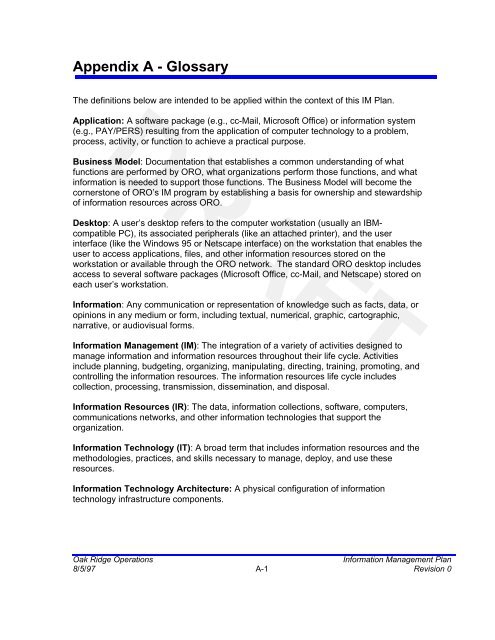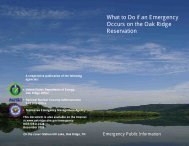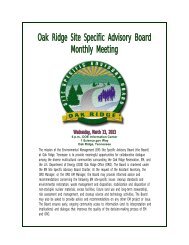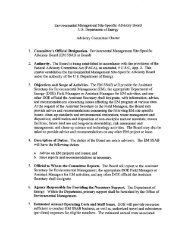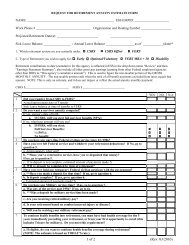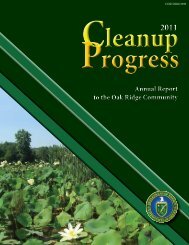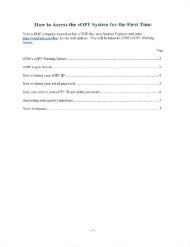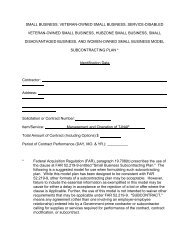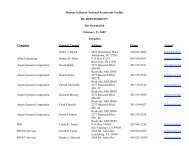draft - DOE Oak Ridge Operations - U.S. Department of Energy
draft - DOE Oak Ridge Operations - U.S. Department of Energy
draft - DOE Oak Ridge Operations - U.S. Department of Energy
Create successful ePaper yourself
Turn your PDF publications into a flip-book with our unique Google optimized e-Paper software.
Appendix A - GlossaryThe definitions below are intended to be applied within the context <strong>of</strong> this IM Plan.DRAFTApplication: A s<strong>of</strong>tware package (e.g., cc-Mail, Micros<strong>of</strong>t Office) or information system(e.g., PAY/PERS) resulting from the application <strong>of</strong> computer technology to a problem,process, activity, or function to achieve a practical purpose.Business Model: Documentation that establishes a common understanding <strong>of</strong> whatfunctions are performed by ORO, what organizations perform those functions, and whatinformation is needed to support those functions. The Business Model will become thecornerstone <strong>of</strong> ORO’s IM program by establishing a basis for ownership and stewardship<strong>of</strong> information resources across ORO.Desktop: A user’s desktop refers to the computer workstation (usually an IBMcompatiblePC), its associated peripherals (like an attached printer), and the userinterface (like the Windows 95 or Netscape interface) on the workstation that enables theuser to access applications, files, and other information resources stored on theworkstation or available through the ORO network. The standard ORO desktop includesaccess to several s<strong>of</strong>tware packages (Micros<strong>of</strong>t Office, cc-Mail, and Netscape) stored oneach user’s workstation.Information: Any communication or representation <strong>of</strong> knowledge such as facts, data, oropinions in any medium or form, including textual, numerical, graphic, cartographic,narrative, or audiovisual forms.Information Management (IM): The integration <strong>of</strong> a variety <strong>of</strong> activities designed tomanage information and information resources throughout their life cycle. Activitiesinclude planning, budgeting, organizing, manipulating, directing, training, promoting, andcontrolling the information resources. The information resources life cycle includescollection, processing, transmission, dissemination, and disposal.Information Resources (IR): The data, information collections, s<strong>of</strong>tware, computers,communications networks, and other information technologies that support theorganization.Information Technology (IT): A broad term that includes information resources and themethodologies, practices, and skills necessary to manage, deploy, and use theseresources.Information Technology Architecture: A physical configuration <strong>of</strong> informationtechnology infrastructure components.<strong>Oak</strong> <strong>Ridge</strong> <strong>Operations</strong>Information Management Plan8/5/97 A-1Revision 0


